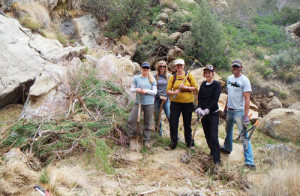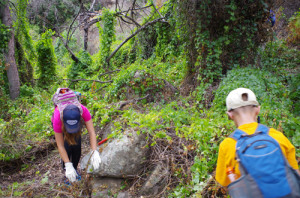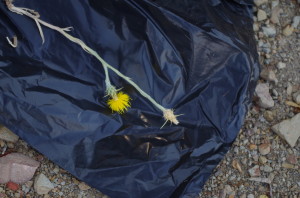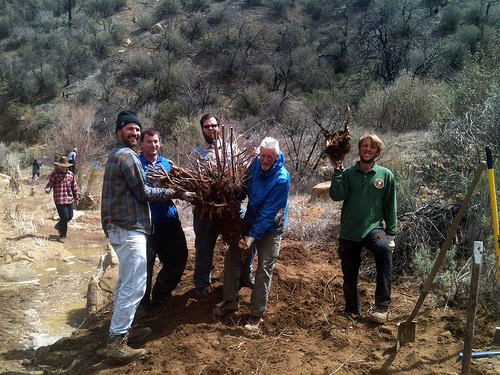What are Invasive Plants?
Invasive plants are not native to the region (most of them were brought over from European colonizers) and therefore have no natural predators or other means of bioregulation. Therefore, invasive plants easily establish themselves and outcompete the native plants given any opportunity. When you look to the hills of the Los Padres, you’ll most likely be able to see at least a few non-native plants (if not many). By removing these invasive plants from the ecosystem, we can reopen ecological niches and help our region’s native plants reestablish dominance, all the while creating better habitat for the animals that depend on native plants for their well-being.
Los Padres ForestWatch focuses on some of the most devastating native plants, which are outlined below.

Tamarisk, Salt Cedar
Tamarix ramosissima
Tamarisk is a large, hardy shrub indigenous to the Middle East. It was originally brought over to the United States to be used as a windbreak, due to its ability to thrive in conditions with poor soil and little water because of their deep reaching taproots. These same characteristics that made the plant so popular are the very same that make it so devastating. Today, tamarisk are a huge problem in the riparian corridors of the Southwestern US, often sucking creeks dry to the point where only tamarisk itself can grow. Due to the plants’ long taproots, physical removal is difficult because it can resprout from its root. Many of the larger shrubs require our skilled volunteers to carefully dig them out, or have trained specialists carefully apply an aquatic-friendly herbicide to the freshly-cut stump. Read more information here.
 Cape Ivy
Cape Ivy
Delairea odorata
Cape ivy is a perennial vine native to a small area of moist mountain forests in South Africa and was first introduced to California as an ornamental plant in 1950. Today it has spread to occupy more than 500,000 acres of the California coast, from San Fransisco to San Diego. The main threat of cape ivy is its ability to completely grow over native vegetation, growing so thick that it actually can uproot small trees from sheer weight, as well as kill plants below from lack of sunlight. Because of this, habitats with a high presence of cape ivy are rendered nearly ecologically useless to animals that rely on riparian habitat. Cape ivy spreads vegetatively from separated fragments and the seeds are not actually viable outside of their natural habitat in South Africa. As result, cape ivy is incredibly difficult to fully eradicate, and requires either chemical treatment, or multiple manual removals to ensure the plant’s complete removal. Read more information here.
 Yellow Starthistle
Yellow Starthistle
Centaurea solstitialis
Yellow starthistle is a winter annual forb that flowers in late spring and summer. Originally from southeastern Europe, the plant was believed to be carried over to California as seeds in a shipment of alfalfa. Since its introduction, it has continued to move about the state as a hitchhiker along lines of transportation. The most recent estimate of its extent was at 12 million acres in 1995. Yellow starthistle grows most commonly in grazing pastures, and areas of motorized OHV trespass. Dense infestations of this plant can displace native plants and animals, rendering ecosystems effectively useless. The best way to control this plant is by eradicating it as soon as any new establishments appear, while dealing with long-invaded areas proves to be very difficult. We tackle smaller infestations that can be effectivitly removed by spot treatment, removing the plants with hand tools and revisiting the sites until it is fully eradicated. Read more information here.
—
If you’re interested in doing your part to protect our native plants, animals, and ecosystems, click the button below or contact ForestWatch at volunteer@LPFW.org or 805.617.4610 ext. 3 to join our list of dedicated, fun-loving, adventurous volunteers today. You’ll receive monthly announcements about upcoming events and ways to get involved.

Tamarisk Removal in Rancho Nuevo Creek






